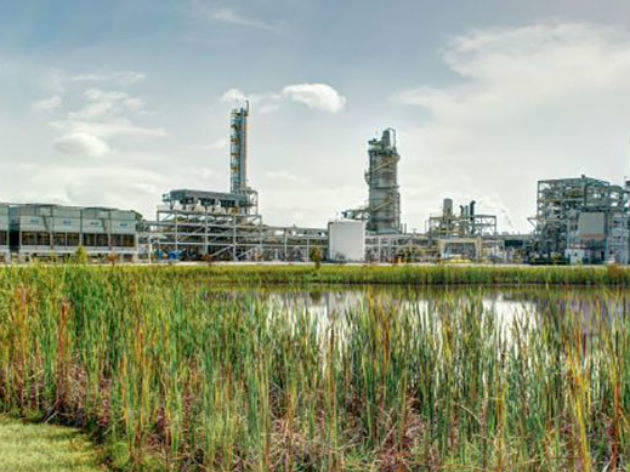

The Indian River BioEnergy Center is an integrated bio-ethanol and power producing facility located near Vero Beach, Florida, US. The commercial demonstration project was developed by the joint venture (JV) of INEOS Bio, a subsidiary of INEOS Group, and New Planet Energy (NPE). It is located adjacent to the local landfill, on the former site of Ocean Spray’s citrus processing facility.
The front-end engineering and design (FEED) study for the project was completed in 2010, construction was started in February 2011 and completed in June 2012. The plant started generating renewable power in September 2012, while commercial production of cellulosic ethanol started in June 2013.
Indian River BioEnergy Center is designed for an annual output of eight million gallons (24,000t) of cellulosic ethanol and 6MW (gross) of renewable power at its full capacity. It consumes 4MW of the generated power, while the remaining 2MW is conveyed to the local grid, which is sufficient to meet the electricity needs of 1,400 households.
A major turnaround of the facility was achieved in September 2014, as well as the installation of an HCN scrubber system.
TBE is building the first biomass power plant in the US to produce power from municipal solid waste.
Financing for the Florida bio-energy project
The overall investment for the project was estimated to be more than $130m. It was chiefly funded through a $50m grant from the US Department of Energy’s (DOE) 932 Integrated Biorefinery programme and a $75m loan from the US Department of Agriculture’s (USDA) 9003 Biorefinery Assistance Programme.
Regional development agency One North East provided £2.8m (approximately $4.3m) for the project, with £1.8m (approximately $2.8m) being secured through the Tees Valley Industrial Programme.
Feedstock and technology used at Indian River BioEnergy Center
INEOS Bio’s advanced BioEnergy technology is implemented at the site to produce biofuel and electricity. The technology is feedstock-flexible, enabling the use of 100,000t of construction waste, municipal solid waste (MSW), and forestry and agricultural waste.
The technology was first developed by Bioengineering Resources at a fully integrated pilot plant in Fayetteville, Arkansas. The pilot facility and technology were acquired by INEOS Bio in 2008.
The technology implements three primary stages including gasification, fermentation and distillation for production of biofuels. The process starts with drying the feedstock using low grade heat, followed by gasification to produce synthetic gas (syngas) containing hydrogen and carbon monoxide.
In the fermentation stage, which forms the core of the process, the syngas is converted into ethanol by naturally occurring bacteria, which feed on the carbon monoxide. The ethanol is finally distilled and purified to bioethanol.
The power generation involves the recovery of heat from the hot syngas and combustion of vent gas from the fermentation stage, which are then fed to a steam turbine-driven electrical generator to produce renewable power.
Contractors involved with the bio-ethanol power project
The FEED study for the project was performed by KBR, whereas the engineering, procurement and construction (EPC) works were performed by AMEC.
Air Products has been contracted to supply gaseous oxygen using its proprietary PRISM vacuum swing adsorption (VSA) generators and liquid oxygen and liquid nitrogen by trucks for the BioEnergy Centre.
Emerson supplied the plant controls, while the ethanol distillation and dehydration equipment were supplied by Vogelbusch.
The daily maintenance, capital projects and turnaround support are being provided by Zachry’s Industrial Services Group (ISG).


